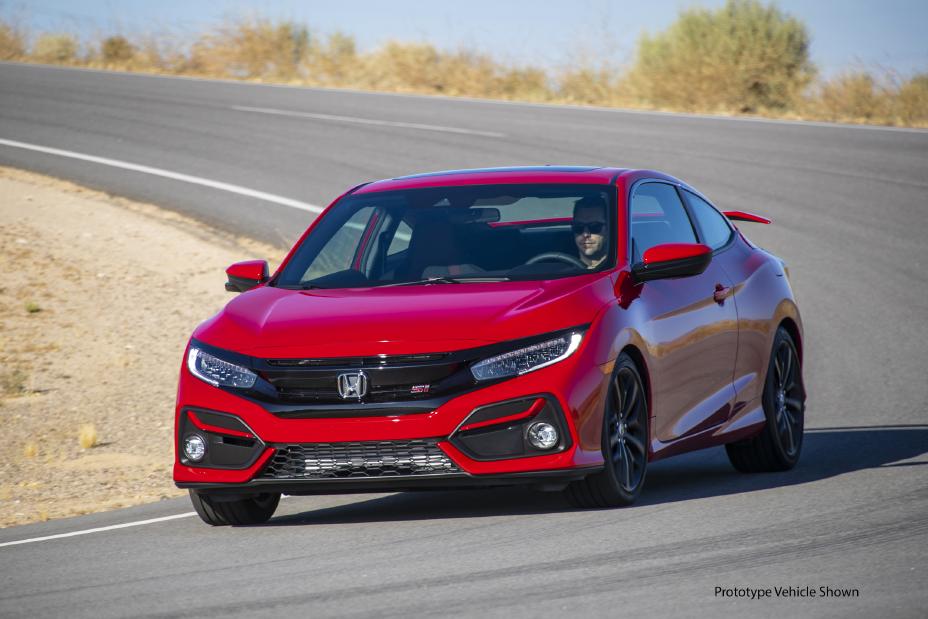
Price: $26,195
8 /10
Rating
Pros
- Turbocharged agility, sharp handling
- Fuel-efficient performance (33 mpg)
- Driver-focused manual transmission
Cons
- Outdated infotainment interface
- Firm ride, intrusive road noise
- No AWD or automatic option
Overview: 2020 Honda Civic Si
Priced just under $26K, the turbocharged 1.5-liter four-cylinder serves up 205 hp to the front wheels, pairing quick acceleration with crisp handling that earned it a spot on our editors’ choice list and Honda’s 10Best award. The manual transmission is smooth, rewarding drivers who value engagement over convenience. But the ride’s firmness and persistent road noise remind you it’s tuned for fun, not luxury. While rivals like the Mazda 3 (with cushier sound insulation) or Hyundai Veloster N (more raw performance) cater to different priorities, the Civic Si splits the difference—sharp but livable.
Available only as a sedan (no hatchbacks or coupe), it leans into practical interior space and subtle design cues: blacked-out trim, red accent stitching, and functional fog light housings. The driver’s seat strikes a balance between support and daily comfort, though the infotainment feels old-school next to competition. Updates since 2016 are modest—think reshaped front trim accents—but the core quality holds strong. For those wanting a tamer vibe, the Honda Civic Sport offers similar styling with less aggression.
Fuel efficiency shines (33 mpg highway), and the Sport Touring trim adds flair for those craving extra styling pizzazz. Still, the lack of all-wheel drive and dated tech might leave some underwhelmed. Among alternatives, it’s a driver’s pick first—a nod to appreciation for analog thrills in a digital age. Just don’t expect it to coddle you.
What's New in the 2020 Honda Civic Si?
For 2020, updates lean subtle but thoughtful. Exterior tweaks include LED headlights, reshaped front and rear bumpers, and matte-black 18-inch wheels—details that sharpen its sporty vibe without shouting. Inside, red accents stitch through the dashboard and sport seats, while revised bolstering keeps you planted during aggressive turns. The six-speed manual gets a quicker final-drive ratio, which I felt immediately when merging onto highways—acceleration snaps quicker, though the clutch remains forgiving. Active-safety features like emergency braking and adaptive cruise control are now standard, a win for daily commutes. Compared to the Honda Civic Hatchback, it’s more driver-focused, but the infotainment still feels a generation behind rivals. Small changes, big polish—just don’t expect a revolution.
Pricing, Trim Levels, and Best Choice
Starting at 26,195, the 2020 base model costs 735 more than the 2019 version, justified by its bevy of updates like standard all-season tires and sharper performance. There’s just one trim—no frills, no fuss—with the slick manual gearbox as the only transmission option. During highway tests, I averaged 33 mpg, so fuel economy stays strong despite the sporty intent. But rivals like the Volkswagen GTI (more tech) or Subaru WRX (all-wheel drive) offer alternatives if you need flexibility.
The sedan’s passenger space and trunk are practical wins, though the same chassis since 2016 feels dated next to newer designs. Those tires? They’re fine for daily driving but replace them if chasing better grip. For the cost, it’s a solid pick if you prioritize acceleration and driver engagement over luxury. Just know the price hike buys polish, not revolution.
Powertrain, Transmission, and Driving Dynamics
The turbocharged 1.5-liter engine delivers 205 hp to the front wheels, feeling peppy when zipping through city traffic or chasing revs on a back road. Paired with the six-speed manual, shifts are crisp—though the clutch requires careful modulate in stop-and-go traffic to avoid jerkiness. During testing, hitting 0-60 mph in 6.3 seconds felt quick but not heart-racing, trailing hot hatches like the Volkswagen GTI. Still, the steering stays precise, and adaptive dampers keep the ride composed even when pushing hard into turns.
Front-wheel-drive underpinnings mean some torque steer under hard acceleration, but the chassis feels flat and planted. The suspension leans sporty, so potholes thud more than rivals, yet it’s never terror-inducing. While the turbo lacks the raw intensity of larger engines, fuel economy (31 mpg combined) sweetens the deal. For fun-to-drive thrills without sacrificing daily sanity, it’s a light, engaging compromise—just don’t expect brake pedal feel as sharp as a WRX.
Fuel Efficiency and Driving Range
Balancing blast-worthy fun with practicality, the sedan’s real-world efficiency surprised me. On a highway fuel-economy test, I hit 36 mpg—matching its EPA rating—but city driving dipped to 26 mpg when pushing the turbo. Opt for summer tires, and mileage drops slightly, though the standard all-season tires strike a fair compromise. Compared to the Si coupe, it’s thriftier, but rivals like the Hyundai Elantra N Line edge ahead. Still, 400+ miles per tank? No complaints here.
Premium Interior and Comfort
Inside the Civic sedan, the cabin balances user-friendly layouts with sporty flair. Driver’s seat adjustments accommodate most tall people, and well-cushioned bolsters hug you during spirited drives. Rear legroom rivals four-door compacts, though the sloped roof limits headroom for six-footers. While road noise intrudes on coarse road surfaces, dual-zone automatic climate control and clearly labeled buttons simplify daily use—a win over the fussy setups in some four-door rivals.
The steering wheel tilts easily, and large openings make entry hassle-free, but the rear spoiler slightly blocks rearward visibility. Narrow sport seats might pinch broader shoulders, yet they’re far from floaty. Compared to the roomier Accord, it’s a small package with compromises, but the ride stays controlled enough for weekend trips. Just don’t expect plush isolation from rough roads.
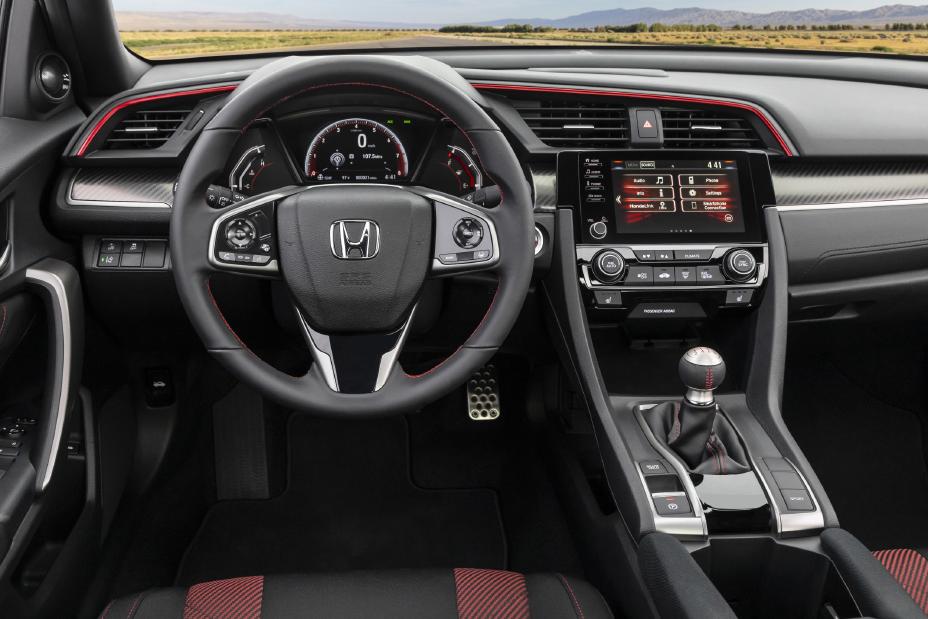
Cargo Space and Practicality
Balancing sporty intentions with daily family duty, the Civic sedan offers a roomy trunk (15.1 cubic feet) and clever cabin storage like a two-tiered cubby under the front armrest—perfect for stashing personal effects. Fold the back seat, and sizable bags slide in easily thanks to a flat load floor, though the opening’s height can challenge bulkier items. I fit a car seat without problem, and smartphone storage near the cord pass-through keeps devices charged and tidy. While rival small sedans like the Mazda3 feel tighter, the Civic’s class-leading solutions—like rear seat room and large door pockets—make it a smart pick for errands or road trips. Just don’t expect limo-like easy access under that sloped roof.
Infotainment, Connectivity, and Smart Tech
The 7-inch touchscreen delivers easy-to-learn basics like Apple CarPlay and Android Auto integration, but its graphics feel dated next to fresher rivals. While the 10-speaker audio system pumps out crisp sound, the sluggish response to inputs tests patience. Honda’s LaneWatch camera—a substitute for a blind-spot monitor—works decently, though the absence of modern advanced driving aids (like adaptive cruise control on base trims) lags behind the Touring trim’s first-rate tech. Two USB ports and a navigation system cover essentials, but the array feels ineffective compared to the class-leading information setups in newer older sedans. At least it’s standard, right?
Safety and Driving Support
Balancing core safety with a few gaps, it earned a 5-star NHTSA rating (including frontal barrier crash and side crash ratings) and IIHS Top Safety Pick status. The collision mitigation braking system and adaptive cruise control work reliably—the latter maintaining distance smoothly—but the LaneWatch camera (passenger-side views on the center screen when signaling) feels dated versus modern blind-spot monitors. Forward-collision warning and automated emergency braking add reassurance, though driver-assistance technologies trail newer rivals. At least the risk of rollover stays low, per dynamic test results.
Key features:
✅ Top Safety Pick with top IIHS crash-test ratings.
✅ Lacks blind-spot monitor; relies on LaneWatch camera.
✅ Adaptive cruise control maintains speed and distance effectively.
Honda Warranty and Maintenance Plan
Honda’s three-year/36,000-mile basic and five-year/60,000-mile powertrain warranty align with class norms but trail Hyundai’s 10-year/100,000-mile coverage. The Si’s scheduled maintenance plan covers two years or 24,000 miles—typical for the segment. While roadside assistance lasts three years, rivals like Kia bundle longer bumper-to-bumper terms. No complimentary 50,000-mile perks here, but reliability tracks well long-term.
Key features:
✅ Standard powertrain warranty matches most mainstream competitors.
✅ No standout perks like Hyundai’s decade-long coverage.
✅ Scheduled maintenance limited to first two years.
2020 Honda Civic models
The 2020 lineup includes various body styles—sedan, coupe, and hatchback—with trims ranging from the base LX to EX-L and Sport. While the turbocharged Si delivers performance features, its cabin omits luxury touches like leather upholstery (which is exclusive to the Touring) in favor of cost-conscious equipment. Compared to competitors, the Civic’s EX and Honda’s upgrades offer a solid mix of daily practicality, although the rear-seat layout feels more confined than that of the hatchback.
| Trim Level | Features |
|---|---|
| Honda Civic LX |
|
| Honda Civic Sport |
|
| Honda Civic EX |
|
| Honda Civic EX-L |
|
| Honda Civic Touring |
|
| Honda Civic Si |
|
Gallery:
Images sourced from Honda Newsroom.


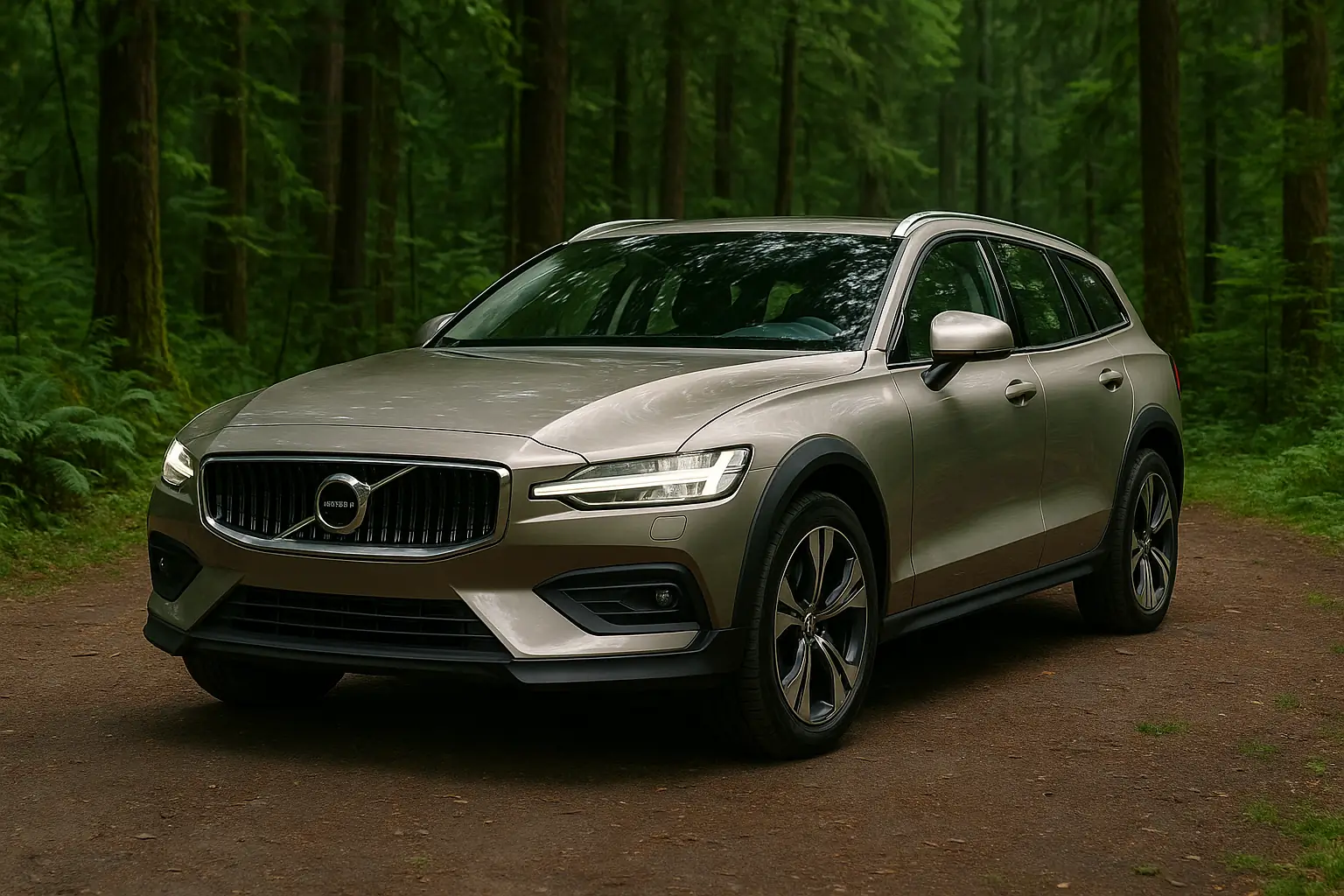
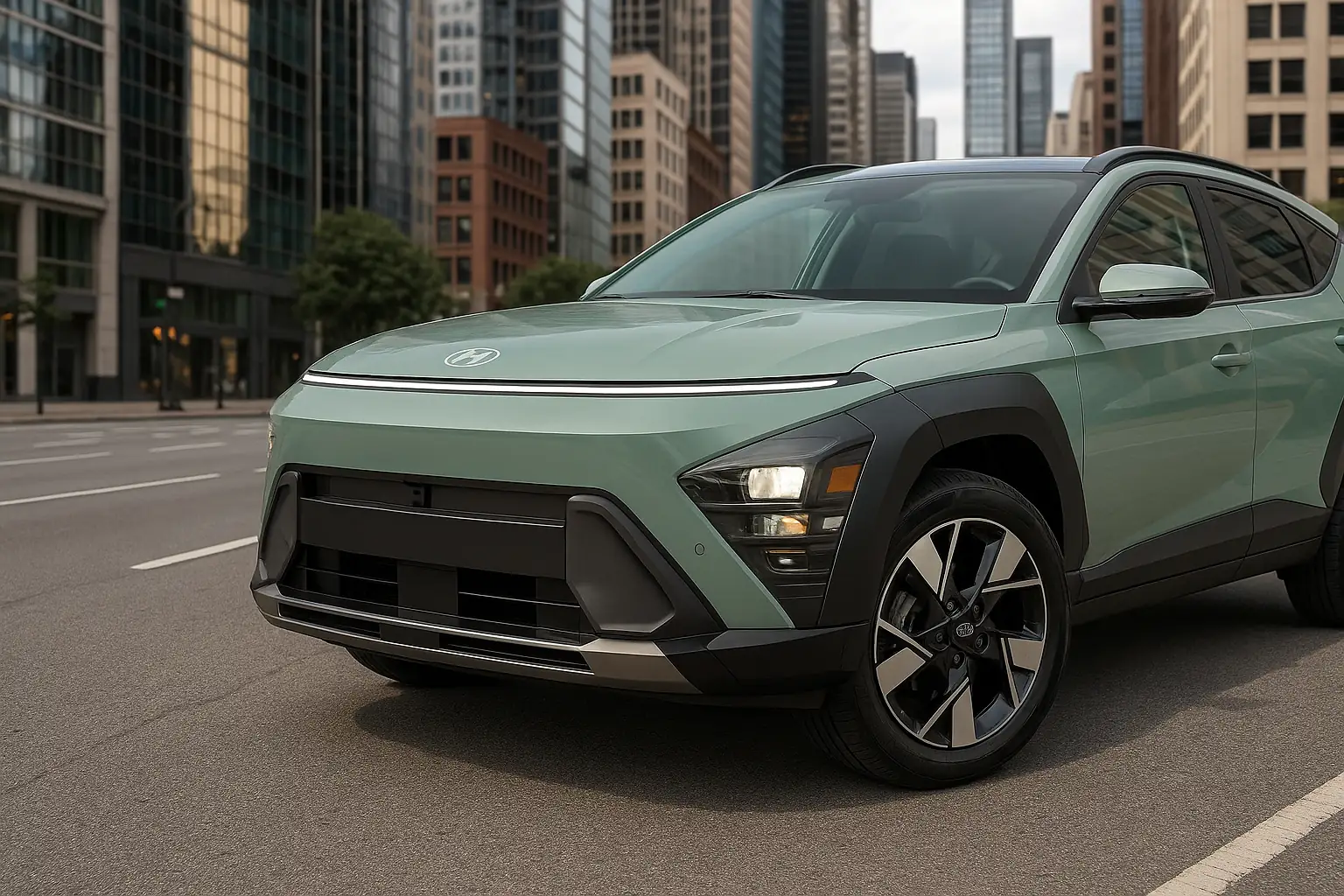
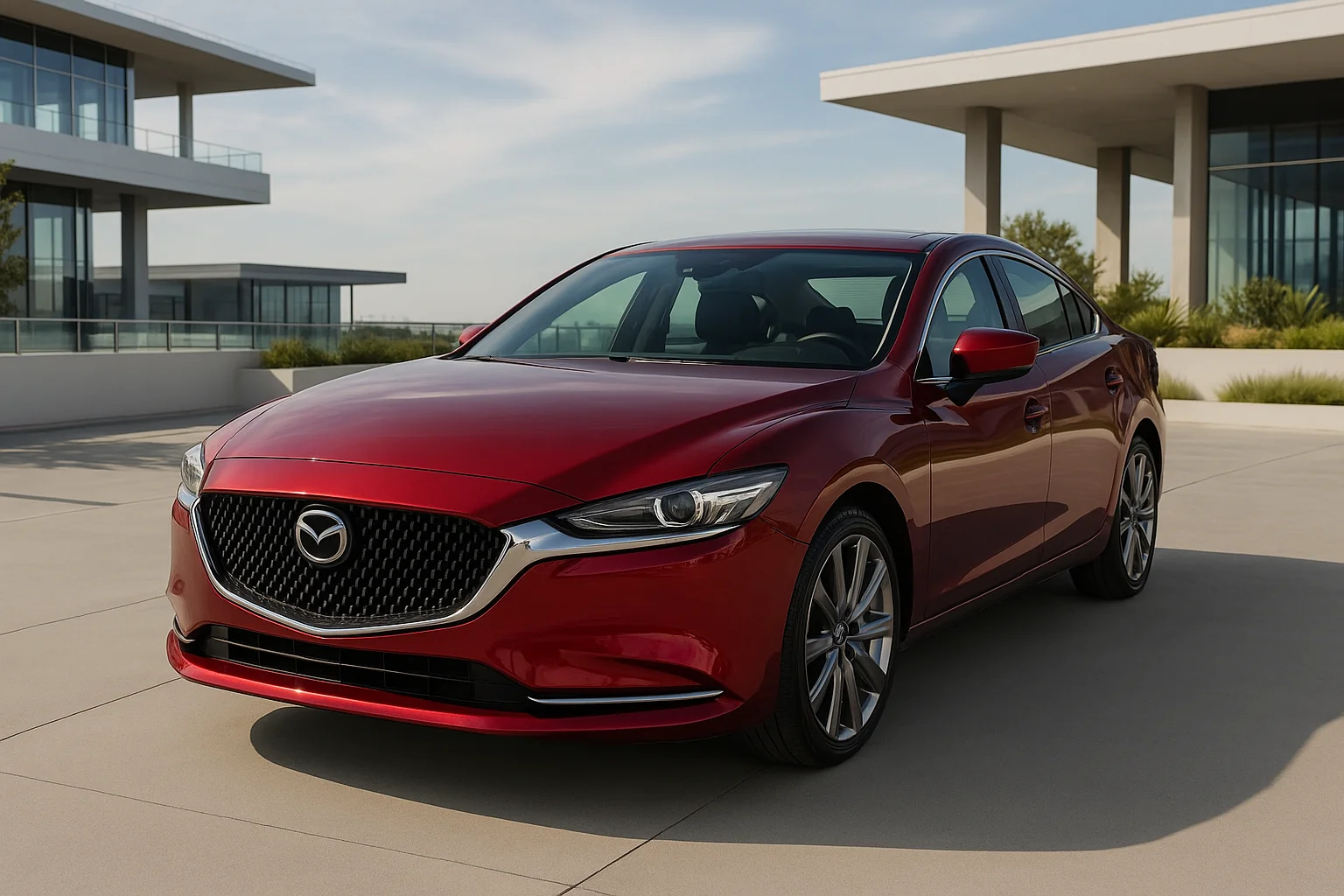
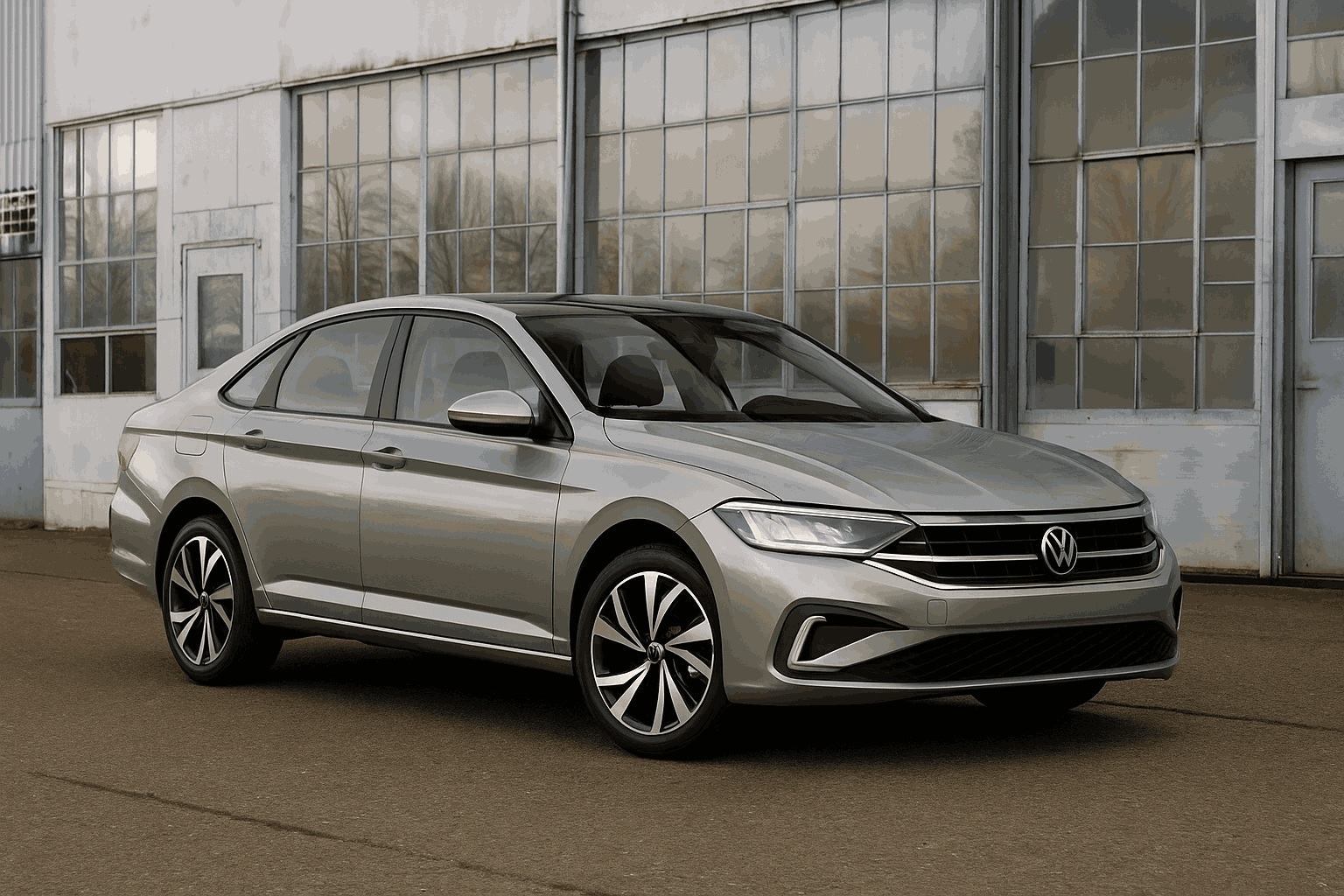
This Post Has 3 Comments
Pingback: 2024 Toyota Corolla Hybrid SE Nightshade review
Pingback: 2024 Hyundai Ioniq 6 Review, Pricing, and Specs
Pingback: 2025 Honda Civic Hybrid Review: Efficiency That Excites